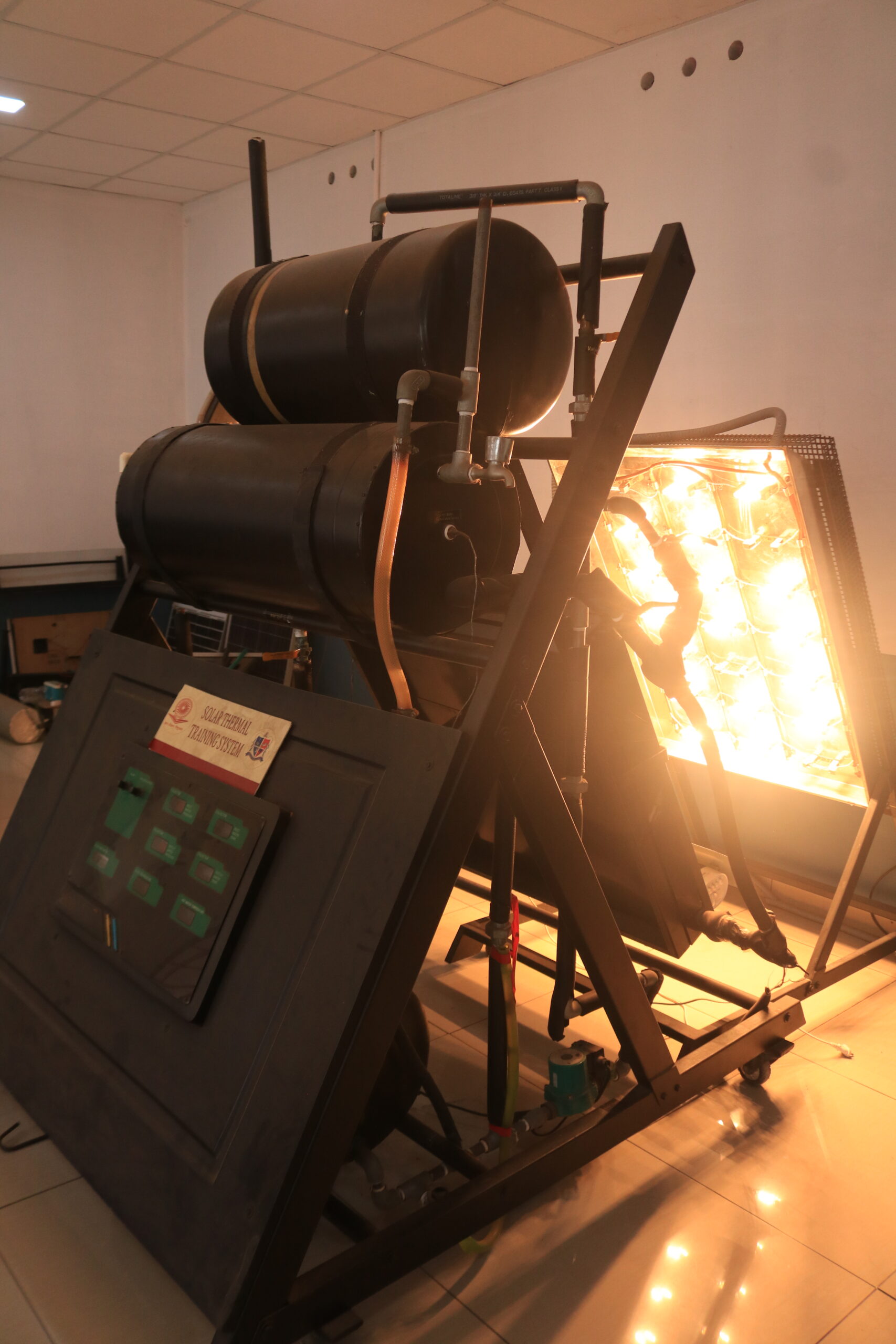Two principles govern solar thermal collectors. First, any hot object eventually loses its heat back to the environment. The efficiency of a solar thermal collector is directly related to heat loss, mainly from convection and radiation. Thermal insulation is used to slow down heat loss from a hot object to its environment. Second, heat loss is more rapid if the temperature difference between a hot object and its environment is larger, in this case between the temperature of the collector surface and the ambient temperature.
A solar water heater consists of a collector to collect solar energy and an insulated storage tank to store hot water. The solar energy incident on the absorber panel coated with selective coating transfers the heat to the riser pipes underneath the absorber panel. The water passing through the risers get heated up and is delivered to the storage tank. The re-circulation of the same water through absorber panel in the collector raises the temperature to 800 C (Maximum) in a good sunny day. The total system with solar collector, storage tank and pipelines is called solar hot water system.
The solar thermal training system is a small model of real time water heating system and can be used for the characterization and different heat transfer analysis. Different aspects like efficiency, overall heat loss coefficient and heat removal factor and their corresponding calculations can be demonstrated with the help of this system. Special feature of this system is to perform experiments with different wind speeds, different fluid temperatures and different flow speeds. This system can be divided in three parts viz. main collector system, measuring unit and artificial light unit.


